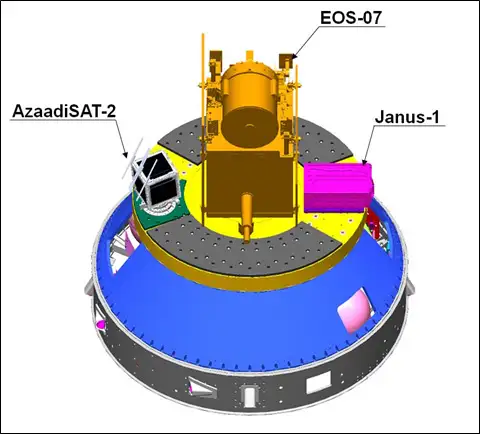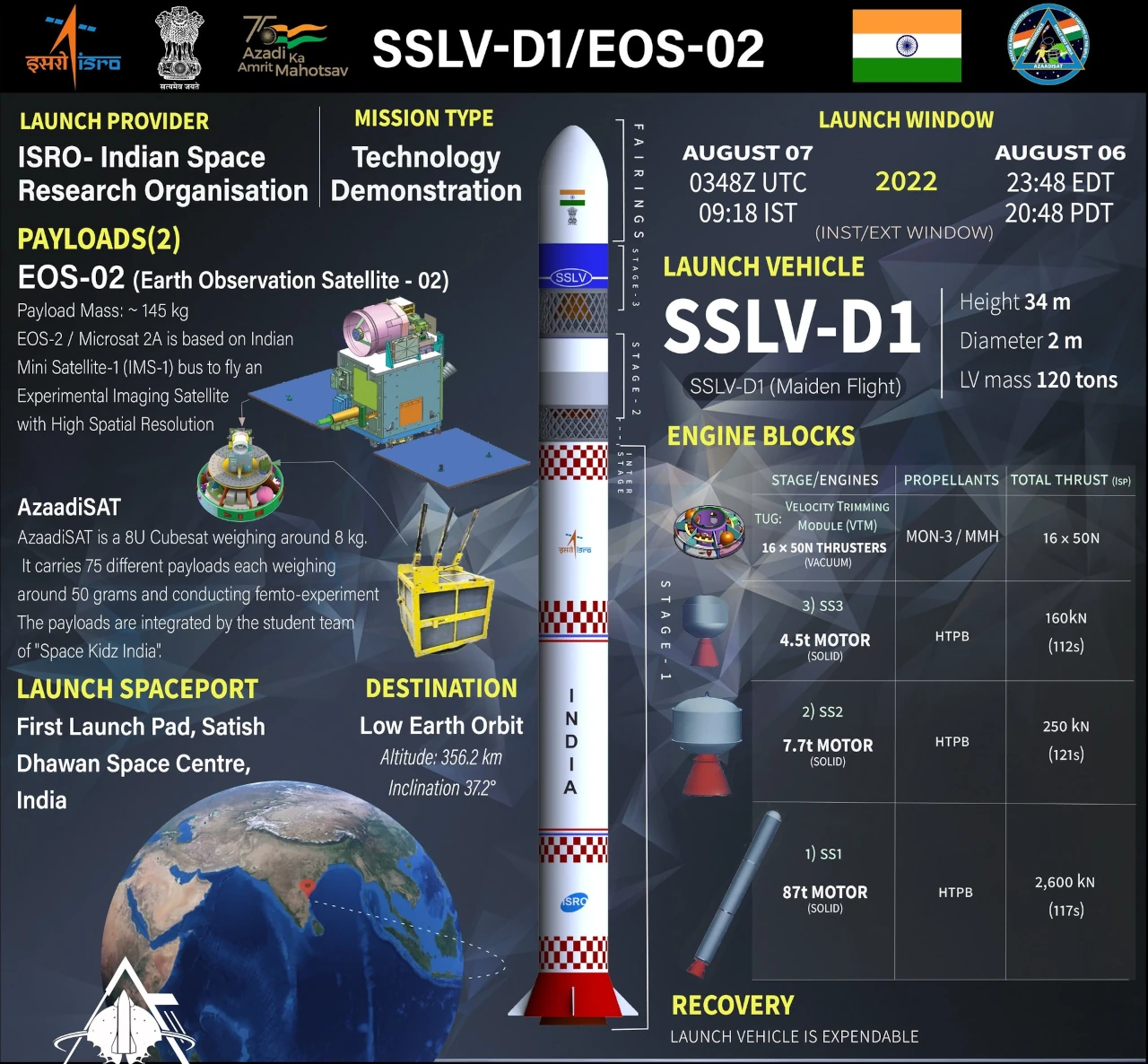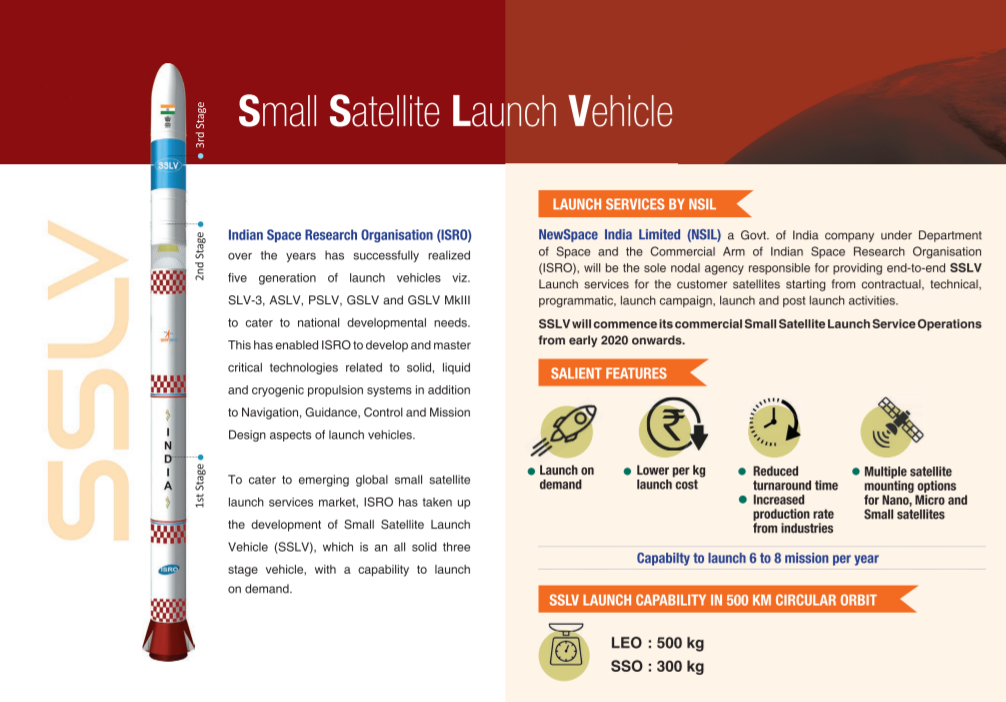ISRO successfully launched the second edition of the Small Satellite Launch Vehicle (SSLV-D2) from the first launch pad of Satish Dhawan space centre at Sriharikota, Andhra Pradesh.
The Indian Space Research Organisation (ISRO) successfully launched the second edition of the Small Satellite Launch Vehicle (SSLV-D2) from the first launch pad of Satish Dhawan space centre at Sriharikota, Andhra Pradesh.
The new rocket will attempt to put three satellites
ISRO’s EOS-07, US-based firm Antaris’ Janus-1, and Chennai-based space startup SpaceKidz’s AzaadiSAT-2 – into a 450 km circular orbit during its 15-minute flight, the ISRO said.

- According to ISRO, the SSLV caters to the launch of up to 500 kg satellites to low earth orbits on a ‘launch-on-demand’ basis. The rocket provides low-cost access to space, offers low turn-around time and flexibility in accommodating multiple satellites, and demands minimal launch infrastructure.
- The SSLV is a 34 m tall, 2 m diameter vehicle having a lift-off mass of 120 tonnes.
- The rocket has three solid propulsion stages and a velocity terminal module.
About The 1st flight of SSLV

The first test flight of SSLV ended in partial failure on August 9 last year after the upper stage of the launch vehicle injected the satellite into a highly elliptical unstable orbit due to a shortfall in velocity. The investigation into the failure also revealed a vibration disturbance for a short duration on the Equipment Bay (EB) deck during the second stage separation, according to ISRO.
All the 3 Rockets of ISRO
With the new rocket in its portfolio, ISRO will have three rockets — Polar Satellite Launch Vehicle (PSLV) and its variants (cost about Rs 200 crore), the Geosynchronous Satellite Launch Vehicle (GSLV-MkII cost about Rs 272 crore and LVM3 Rs 434 crore) and SSLV (Development cost of three rockets about Rs 56 crore each) and production cost may go down later.
About SSLV

SSLV was designed for smaller satellites. These launch vehicles were designed to carry 500 kg of payload. The main objective was to reduce the burden of PSLV.







